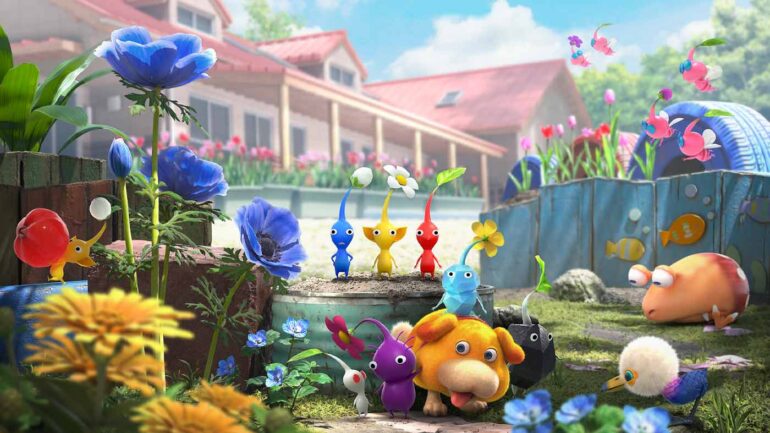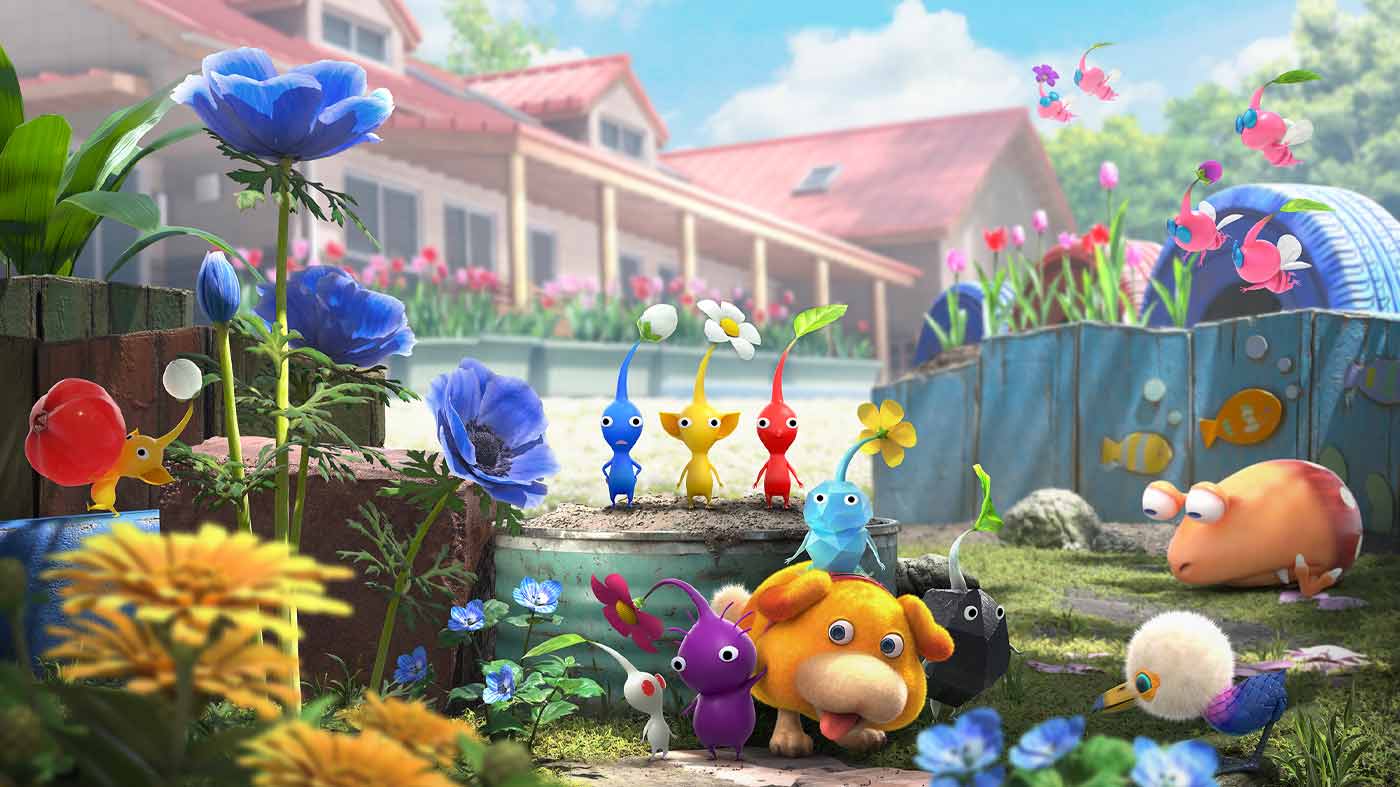It doesn’t feel good to mention this, but it’s been almost a decade since Pikmin 3 was released. I can’t believe it. But while Pikmin’s releases have been sporadic, each game has scratched a different itch for fans. Now, with Pikmin 4, Nintendo has put its best foot forward in practically every aspect to offer one of the best Pikmin experiences ever. No, it’s not as challenging or unforgiving as the first game was, but it’s still just as engaging and charming twenty years on.
Not too keen to deviate from the tried and true narrative, Pikmin 4 once again opens with Captain Olimar crash-landing on an unknown planet and activating a distress signal to be rescued. You play as the newest recruit of the Rescue Corps, but in a continuing comedy of errors, your crew finds themselves also shipwrecked on the planet they need to rescue Olimar from. Your team is scattered across the planet, and it’s up to you to collect them and find Olimar. Again. Of course, there’s a little bit more to it, and while it’s hardly the most gripping of stories, it is one of the better Pikmin tales we’ve heard so far.
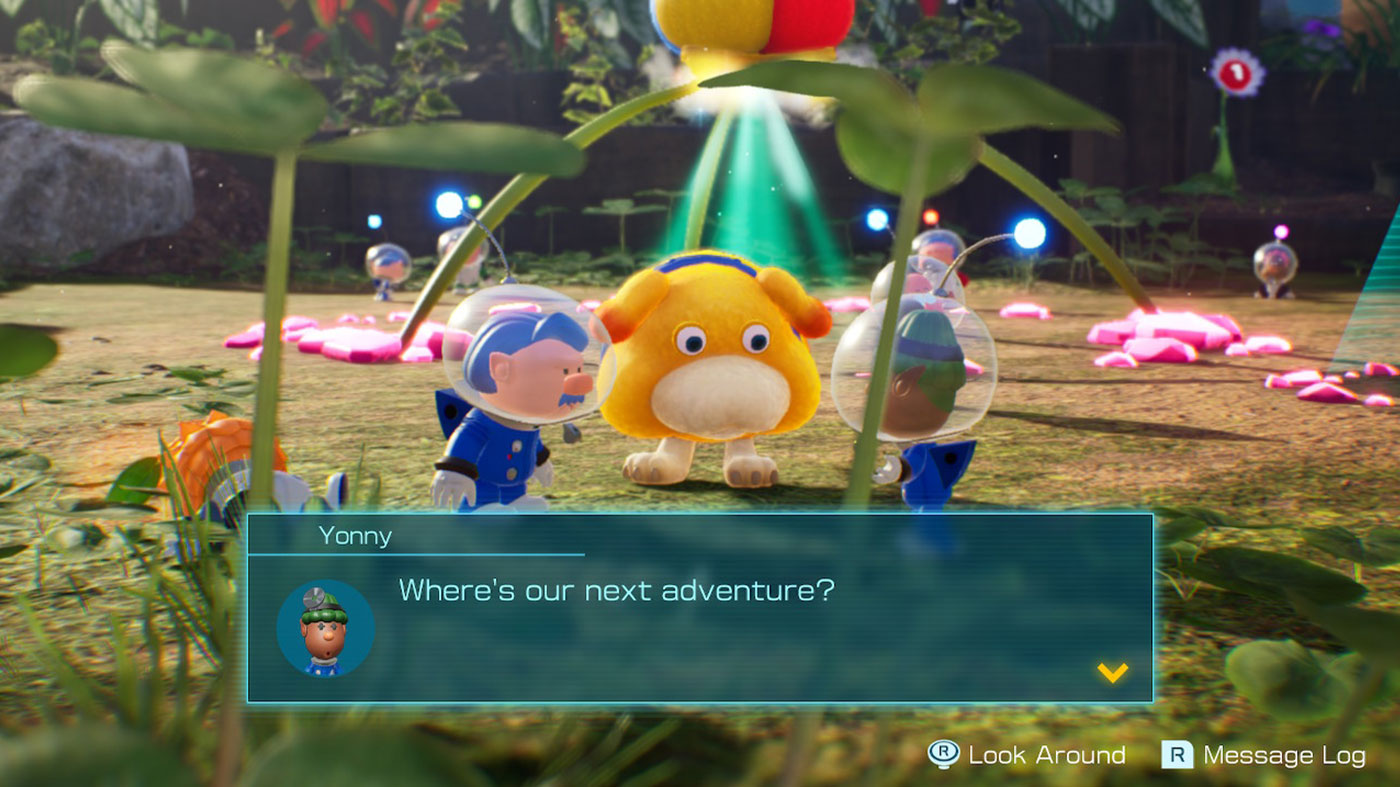
Pikmin 4 is hard to categorise. At its core, the franchise is Nintendo’s take on a real-time strategy game, but with puzzles thrown in to keep things interesting. The focus is on your horde of Pikmin that you can control. They’re plant-like creatures who can be directed to collect items, destroy obstacles and fight the hostile creatures you’ll encounter. Commanding your Pikmin is satisfying but harrowing – losing them is especially sad. This might sound a bit absurd, but Pikmin is one of the most potent games I’ve played about war that isn’t explicitly about war.
Bizarrely, every Pikmin game thus far has had a different focus, so opinions are diverse as to which one is the best. Pikmin 4 is different from other Pikmin games – it attempts to leverage the best bits of the last three games to offer the most complete Pikmin experience yet. Diehard fans will no doubt find disappointment in the statement that, yes, Pikmin 4 isn’t as challenging as the original Pikmin was. But the tension and difficulty escalate in a way that feels fair and appropriate and, as a result, much more forgiving without being insultingly easy.

Enter Oatchi. He’s a space dog found by the player when they first land on the planet and, without a doubt, the star of Pikmin 4. Oatchi can do it all – behave like a second squad leader or act like a supercharged Pikmin. He’s incredibly powerful, able to carry Pikmin over certain bodies of water or inflict massive damage against the hostile creatures you’ll encounter. His immense strength means he can hold items like a Pikmin can, and with certain upgrades, he can even resist the elements. He’s absolutely adorable and one of my favourite things about the game, though he does trivialize a lot of the difficulty in the opening areas of the game.
THE CHEAPEST COPY: $69 AT AMAZON WITH FREE SHIPPING
Thankfully, as you progress through the story, the tendency to lean on Oatchi as a crutch becomes less tempting. Enemies will learn new tricks that will render Oatchi useless in certain situations or areas and will purposefully split you and your Pikmin away from him to get you to work harder for your wins. Make no mistake – Pikmin 4 can still be a challenging game; I had essentially halved my total Pikmin population as the credits rolled following some of the more intense battles the game offers.
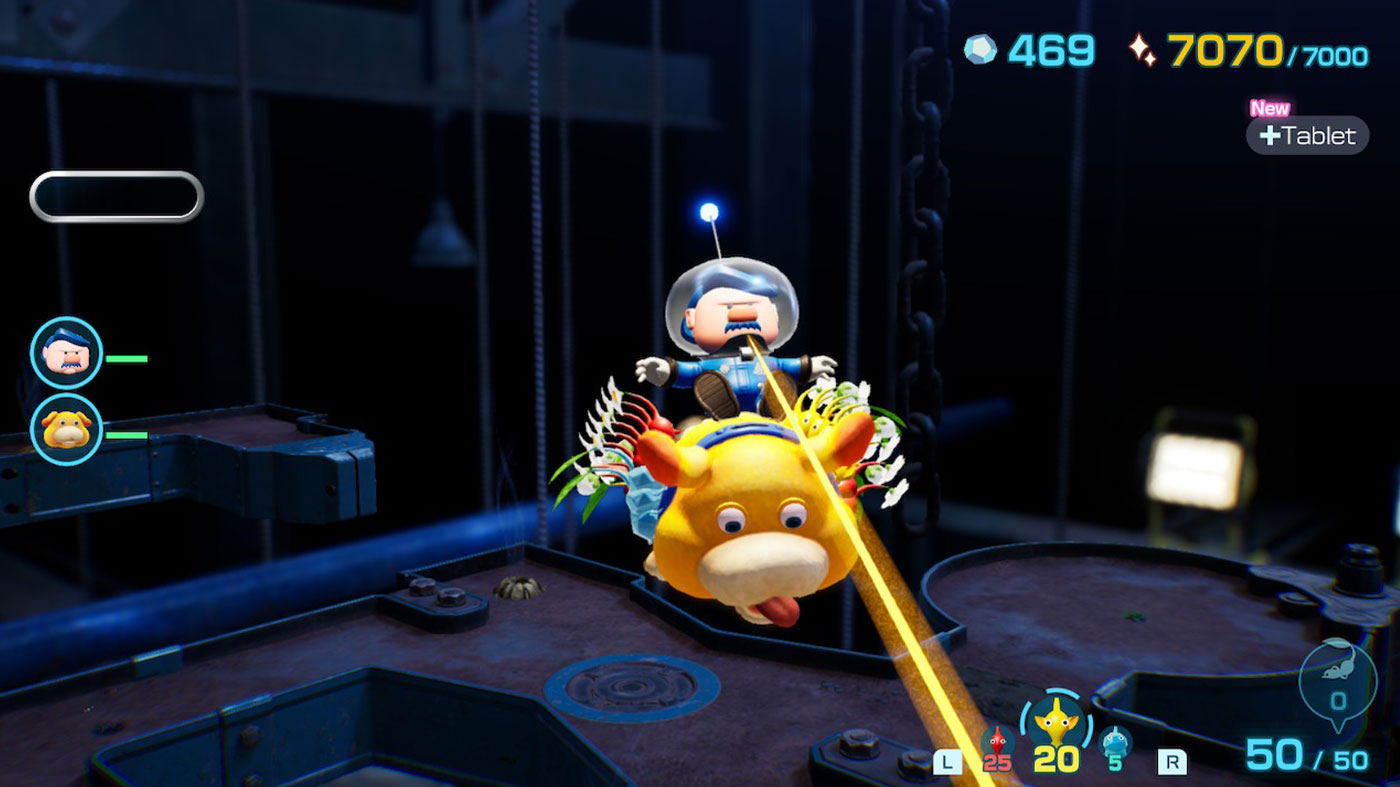
Pikmin 4 is structured similarly to previous games. You have a hub area where you can upgrade Oatchi and decide where to explore for the day. The levels you’ll explore are more open-ended than in other Pikmin games – there’s rarely a linear path through them like in Pikmin 3. Pikmin 4 instead throws you onto a map and asks you to collect treasure, complete activities, and explore caves to earn enough resources to explore other areas of the planet. Each level is the biggest in series history, so there’s much to do in each. More encouragingly, they’re not just typical locales plucked from nature either; there are some new ideas explored here too.
This translates to a more open-ended experience. Pikmin 4 doesn’t have you separated from your crew and using days to catch up with them. Instead, you’re given free rein to explore each of these levels and bring back as much treasure to the ship as possible. The game splits them into four categories – Surface Exploration, Dandori Battles, Dandori Challenges and Caves.
Caves have made a long-awaited return from Pikmin 2 and a triumphant one. Easily the highlight of Pikmin 4, these caves are handmade content with a theme and puzzles and bosses to match them. Gone are the randomly generated caves from Pikmin 2. Instead, we have mini dungeons split into sub-levels that are a joy to explore. In each one, you’ll have to leverage the different Pikmin types to solve puzzles and harvest as much treasure from the dungeons as you can.
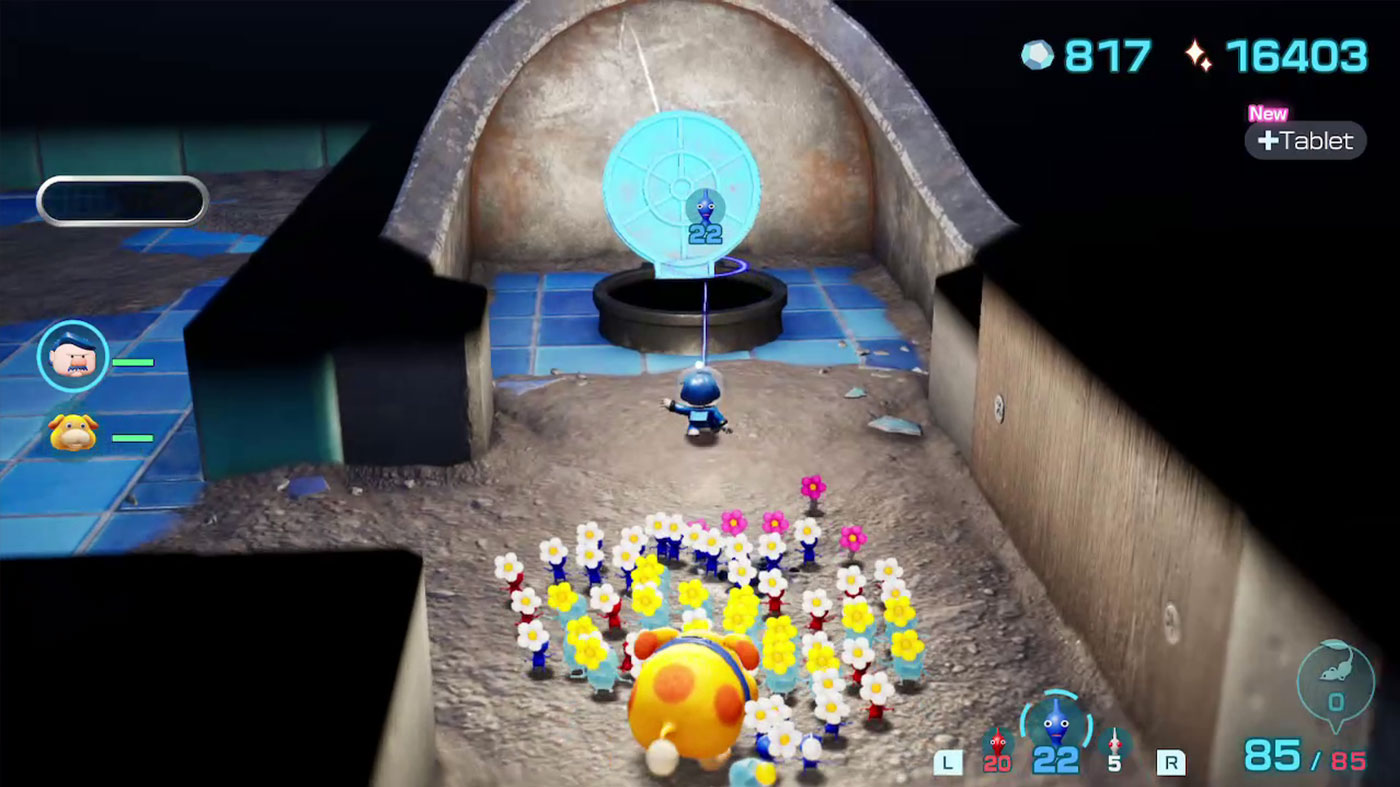
Other activities are a blast too. Dandori Challenges are designed to test how efficient you can be with a pre-determined party of Pikmin. Dandori Battles are even more hectic – pitting you against another character as you compete to collect the most treasure in an area. These battles work similarly to the Bingo Battles from Pikmin 3 and can be played with another player locally when not playing in the Story mode. They’re a fun and intense distraction with which I had more fun than I’d ever anticipated.
Sadly, the strength of the multiplayer offerings ends there. Besides these battles, Pikmin 4 does allow a second player to pick up a joy-con and throw pebbles at the screen. It’s a weird inclusion – but throwing pebbles at Pikmin will speed them up, while throwing them at enemies will whittle down their health. It breaks the balance of an already easy game and honestly feels like an afterthought. I recognize that the story doesn’t suit itself well to the robust co-op we’ve seen in Pikmin 3. However, even having a second player control Oatchi might’ve been more fun than what we got here. It just feels like a missed opportunity.
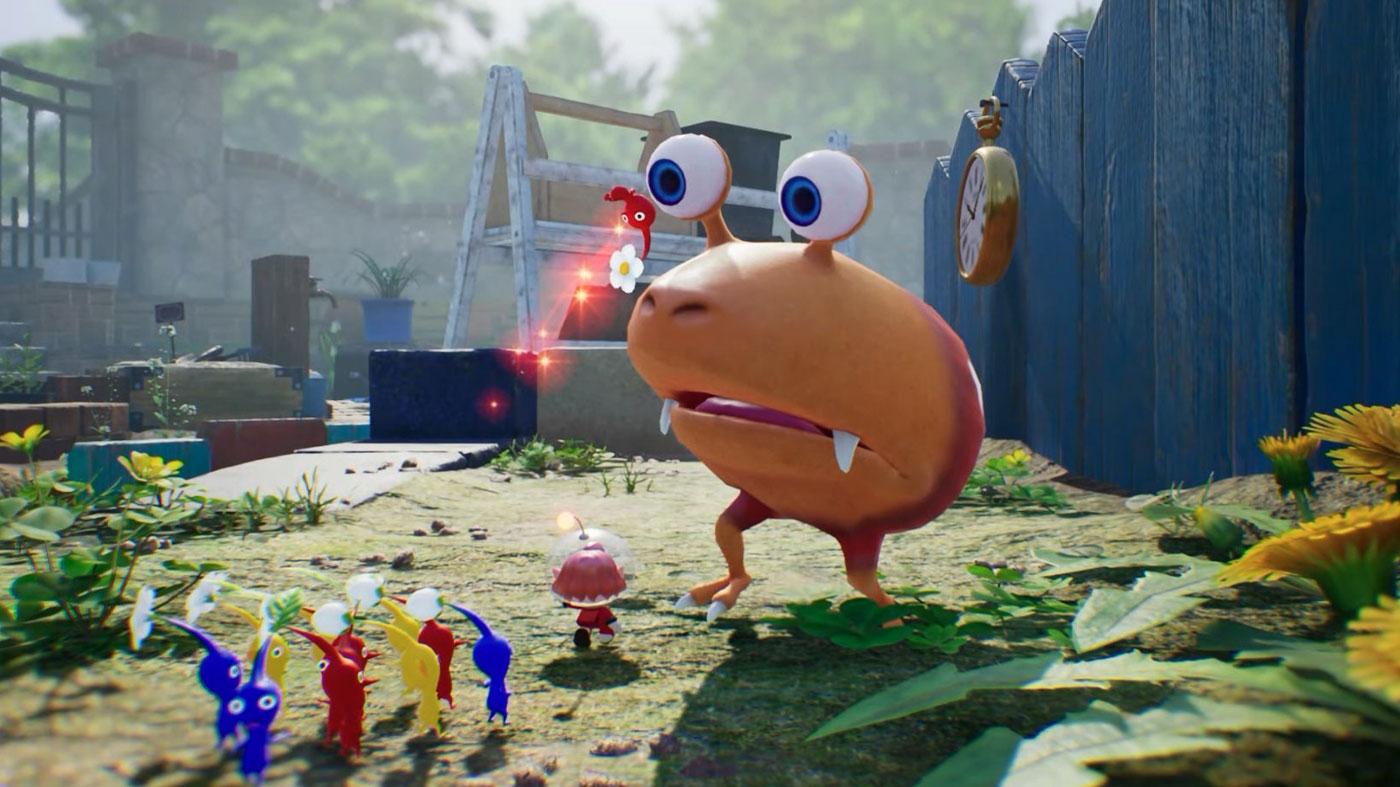
The other significant new addition is the nighttime expeditions, where the now classic feeling of tension you get from Pikmin games is found. There are ten to fifteen of them, and each has you defending mounds of glow sap from waves of aggressive enemies. As these challenges become more and more intense, you’ll have to assign Oatchi to protect specific points while you harvest Glow Pikmin (a special type of Pikmin unique to these expeditions) to build up your forces to defend yourself. They get very tense and are some of the more significant challenges in the game.
I mentioned before that Pikmin 4 feels like the most complete Pikmin experience thus far, owing to how much this game is packed. There are hundreds of enemies to encounter, over twenty caves to explore and even some other surprises that I won’t talk about. But more importantly – it’s all engaging. It’s a joy to complete and the first time in series history that I’ve 100%ed a Pikmin game on my first run without returning to it later. You’d think that making Pikmin more open-world and less story-driven would make the pacing suffer, but it doesn’t. Pikmin 4’s thirty-hour odyssey is engaging from beginning to end.
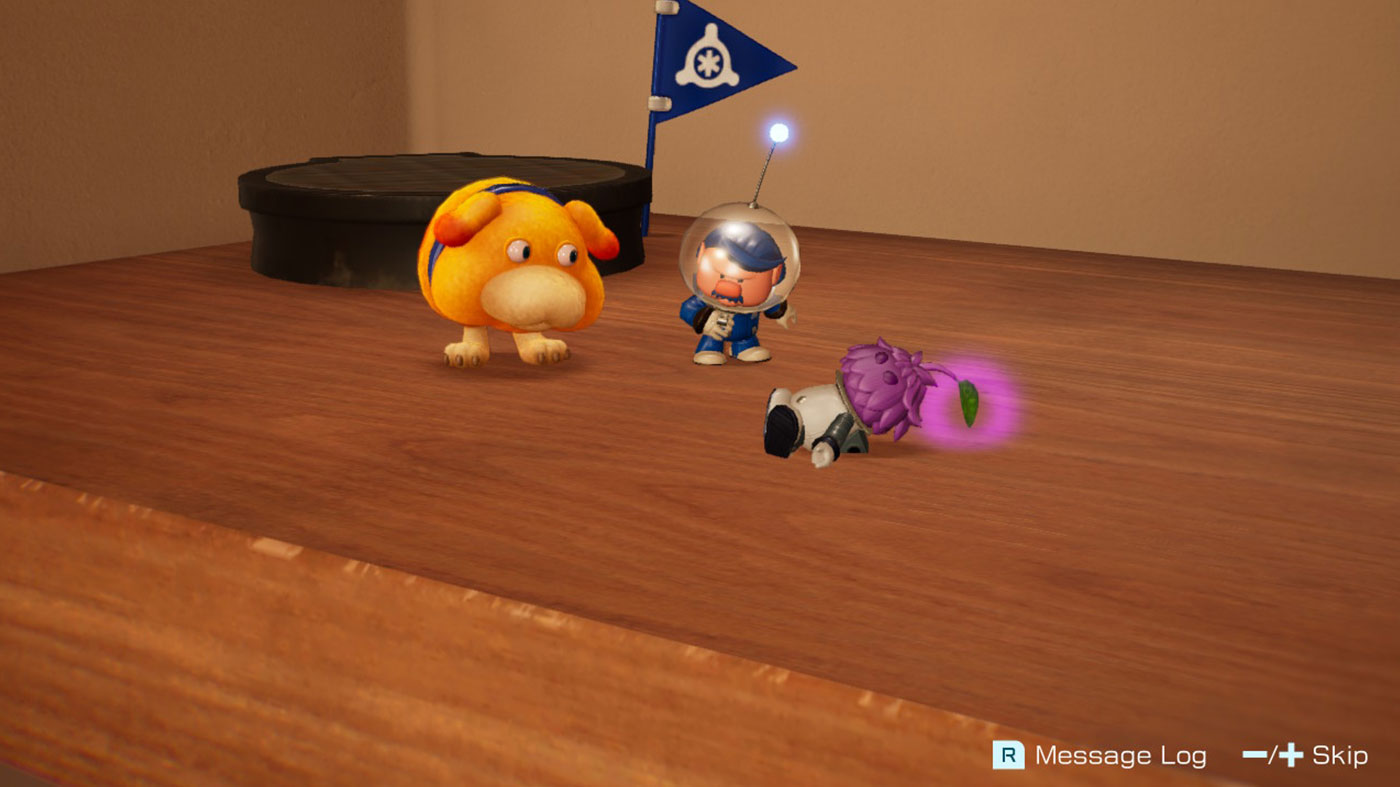
And, of course, we can’t ignore the game’s stellar presentation. Without a doubt, this is the best-looking game in the series. Not only from a technical standpoint but an artistic one too. I went back to all the Pikmin games before finishing Pikmin 4, and yes, Pikmin 4 is just a much better-executed visual feast than the games that came before it. It’s a more colourful and brighter world that’s a joy to explore. It’s also one of the best-performing games on the Switch I’ve played in recent years, which is always a pleasant surprise this late into a generation.


